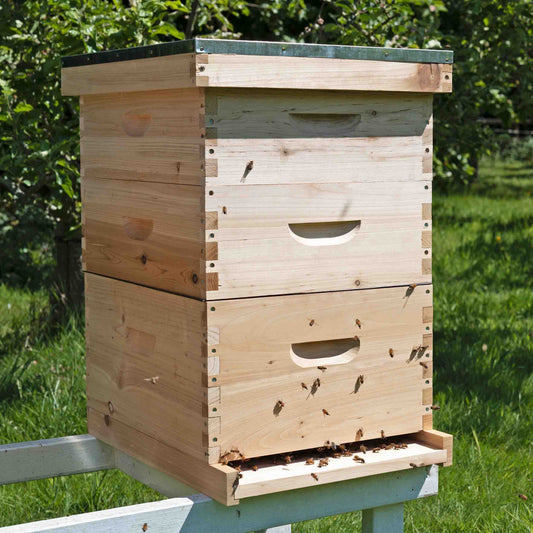
What is a Buckfast honey bee?
Buckfast bees are a breed of honey bee. They are a cross between the Italian (Apis mellifera ligustica) bee and the British native dark bee (Apis mellifera mellifera).
They have become the industry standard for beekeeping worldwide due to their excellent honey production, behaviour, and disease resistance. We’ll discuss this further in the article ahead.
How were Buckfast bees created?
They were first developed by Brother Adam (Karl Kehrle) at Buckfast Abbey in Devon, hence the name Buckfast.
Karl began beekeeping when he took responsibility for the abbey’s apiary in 1919. In the years before this, bee populations had been devastated by a mite called Acarine. This mite breeds in the trachea (the bees’ breathing tubes).
He began importing bees from France and Italy in 1919. He started his breeding programme using isolated mating sites in the Dartmoor area. This helped him selectively breed for the traits he wanted.
What are the desired traits of Buckfast bees?
Buckfast bees have three categories of desired traits: Primary, Secondary, and Tertiary characteristics.
Primary Characteristics:
1. Industrial – They have a boundless capacity for flower foraging.
2. Fecundity – The ability for the queen bee to lay many eggs. The Buckfast queen must be able to fill at least 8 frames from a Dadant beehive with brood.
3. Resistance to disease – The bees must be resistant to diseases.
4. Swarming – The bees must not have a tendency to swarm. This is key in beekeeping, as swarming bees reduce honey yields.
Secondary Characteristics:
1. Longevity – This is the relative lifespan of a bee compared with its foraging ability.
2. Wing power – The ability for a bee to forage further.
3. Great sense of smell – Paired with wing power, the Buckfast bee’s keen sense of smell means that it forages further for new nectar sources.
4. Instinct to defend – Not to be confused with aggression. The Buckfast bee protects itself from other colonies. This prevention of robbing helps reduce disease in apiaries.
5. Hardiness and overwintering ability – The bees have a better survival rate over winter.
Tertiary Characteristics:
1. Good temper – No aggression towards beekeepers when their hive is being inspected or accidentally knocked.
2. Calm behaviour – The bees are calm on the comb and don’t fly up when the hive is opened.
3. Limited use of propolis – The bees don’t use much propolis in the hive or between frames. This makes inspections easier.


